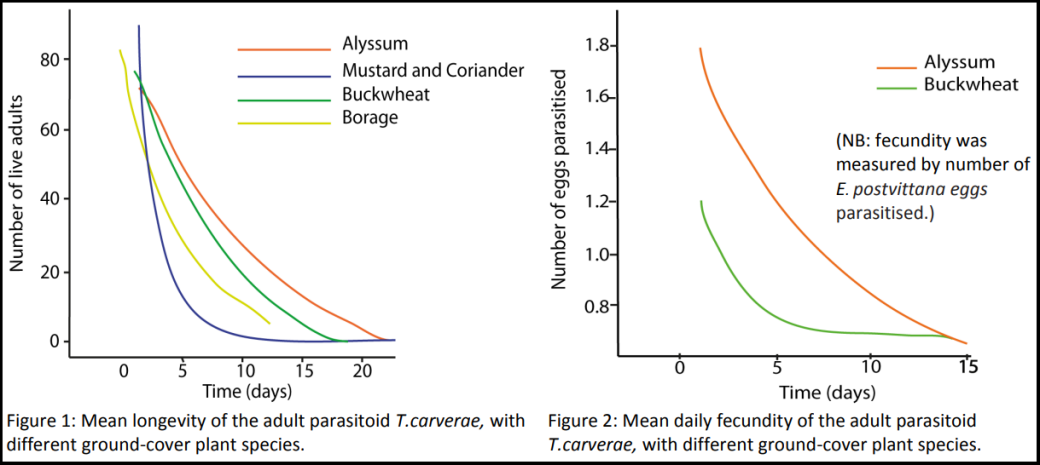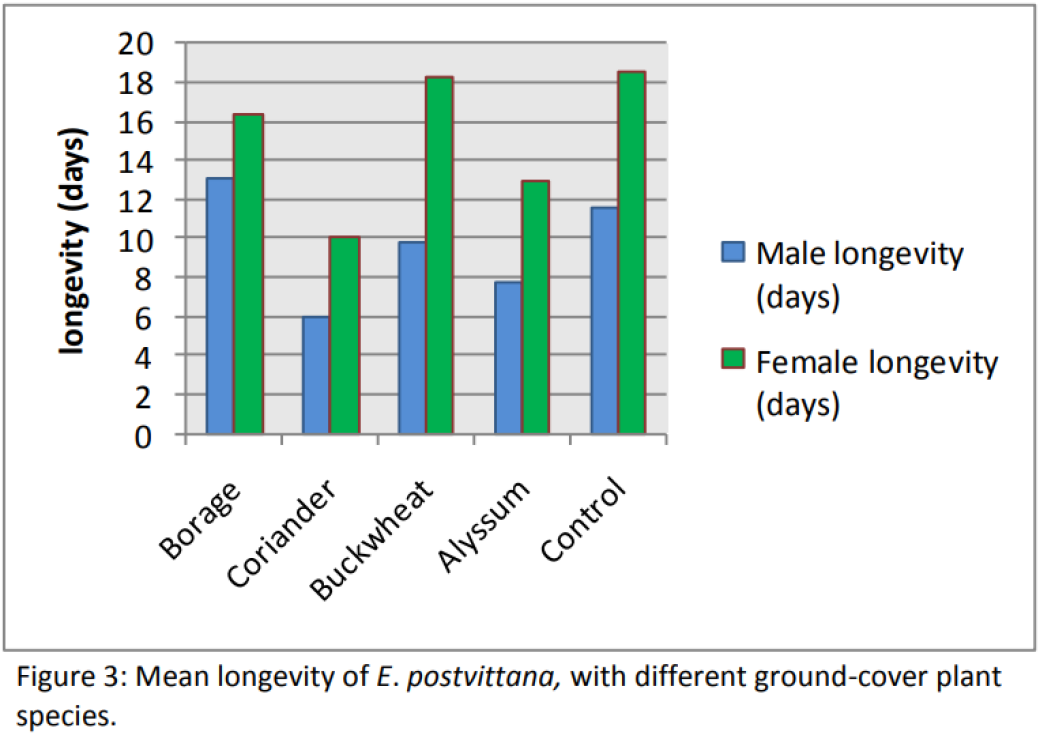LENScience
Challenge Questions
This page contains further questions on the subject of biodiversity and are designed to stimulate more in-depth conversation and learning. These questions support students to think and write at the level of synthesis and understanding required for Merit and Excellence discussions and above.
Questions
1. Lack of appropriate food resources can affect the survival and effectiveness of natural enemies. One effect of insufficient resources is on sex ratios of the adults. Explain how a sex ratio that is biased towards males can impact on the ability of a parasitic wasp to control a pest.
2. Over the last 10 years headlines similar to this “Bee decline puts world food supply at risk" have increasingly appeared in the media. Explain the possible causes of the decline in bee numbers and discuss why this puts the world’s food supply at risk.
3. The graphs and table below are from a study looking at potential ground-cover plant species to improve performance of the egg parasitoid Trichogramma carverae in controlling the vineyard leafroller pest Epiphyas postvittana - the light brown apple moth. T. carverae parasitises the light brown apple moth by laying its eggs in the eggs of the moth. The eggs hatch into larvae, which then consume the eggs.
The plant species tested were:
- Alyssum: Lobularia maritima
- Mustard: Brassica juncea
- Coriander: Coriandrum sativum
- Buckwheat: Fagopyrum esculentum
- Borage: Borage officinalis
Use the information from the graphs and these resources to answer the following questions:
a. Which plant species enhanced the effectiveness of the parasitoid T. carverae?
b. Which plant species benefitted the leafroller E. postvittana?
c. What planting recommendations would you make for increasing the effectiveness of the biological control agent T. carverae in a vineyard where E. postvittana is a problem?


References
Figures 1-3 redrawn from: Begum, M., Gurr, G. M., Wratten, S. D., Hedberg, P. R., & Nicol, H. I. (2006). Using selective food plants to maximize biological control of vineyard pests. Journal of Applied Ecology, 43(3), 547-554.




